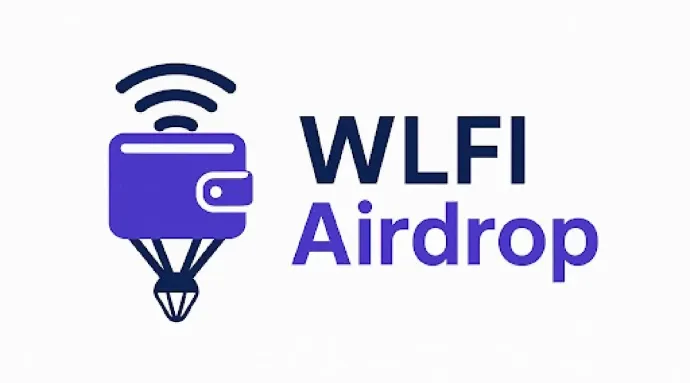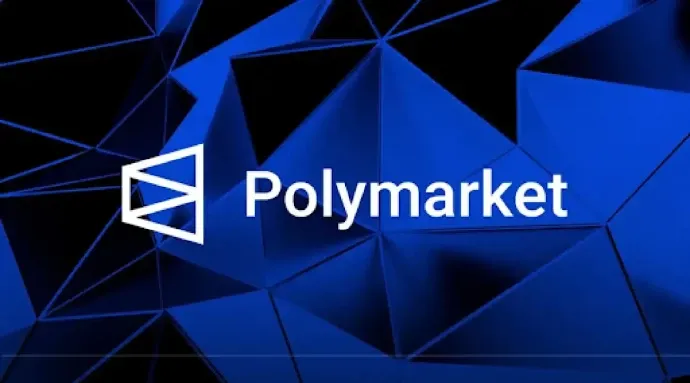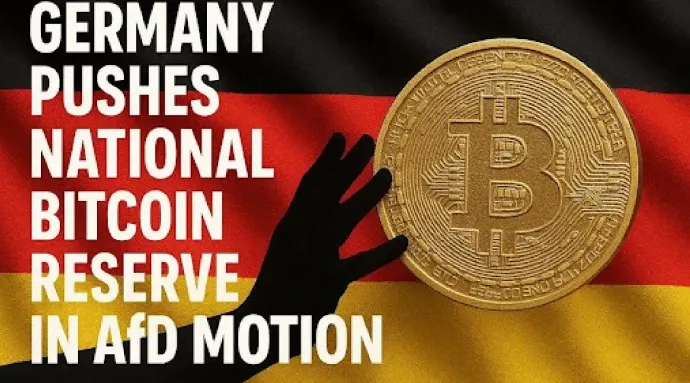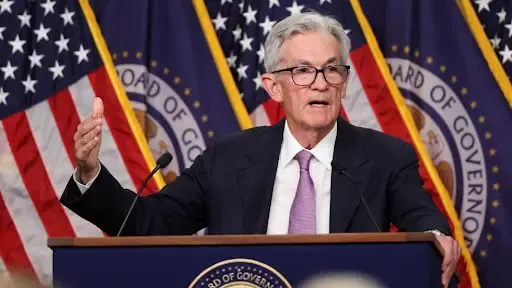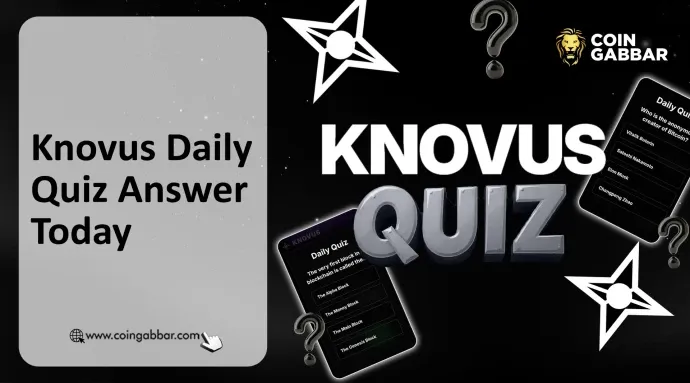NFT trading activity showed signs of recovery in the third quarter of 2025, breaking the long-term downward trend following the post-hype period.
After two years of market contraction and narrative shifts, the on-chain market has found a new foothold, with growth driven not by blue-chip collectibles or speculative artworks, but by lower-cost infrastructure, loyalty programs, and sports-related assets.
The core of trading these assets lies in their practicality rather than their status symbol.
NFT Trading Volume Rebounds, Sales Reach Historic Highs
With Ethereum's scaling upgrade driving trading activity towards L2, Solana has established a foothold with high throughput and compression technology, while Bitcoin inscriptions have developed into a collectible culture linked to the fee market, alternating between boom and bust. The focus of the NFT market has shifted to low-cost infrastructure and practical application scenarios.
Today, the key drivers of market growth are fee levels and distribution channels, rather than profile picture NFTs.
The economic landscape has been reshaped post-Dencun upgrade, with Ethereum's EIP-4844 proposal reducing the data costs for rollups, bringing L2 transaction fees down to a few cents, and supporting gasless minting or sponsored minting processes aimed at mainstream users.
After the upgrade, L2 transaction fees dropped by over 90%, a change reflected in minting behavior, and has propelled Base to become a core distribution channel.
In the Solana ecosystem, compression technology has enabled large-scale NFT issuance for loyalty programs and permissioned access applications.
The deployment cost for 10 million compressed NFTs is about 7.7 SOL, and even under high load, the median transaction fee remains close to $0.003.
Bitcoin inscriptions have opened an independent track, closely tied to the memory pool cycle and miner income. As of February 2025, the number of inscriptions has exceeded 80 million, ranking among the top three by historical NFT sales volume.
Demand Side Rebounds but Concerns Remain
According to DappRadar, NFT trading volume nearly doubled quarter-on-quarter in the third quarter of 2025, reaching $1.58 billion, with sales hitting 18.1 million transactions, setting a new quarterly trading record.
Sports-related NFTs performed particularly well, with trading volume surging 337% quarter-on-quarter to $71.1 million. The cyclical practical value, rights, and loyalty benefits of these assets decoupled their consumption behavior from their floor prices.
The summer market initially saw a rapid rebound, followed by a cooling off: according to CryptoSlam, sales reached $574 million in July 2025 (the second highest of the year), but in September, influenced by a decline in overall crypto market risk appetite, sales fell approximately 25% quarter-on-quarter.
This trend confirms that the market has entered a new phase of "declining average prices," indicating that even if the number of independent users and practical application categories remain stable, total NFT trading volume will still fluctuate with the overall crypto market.
The critical role of distribution channels is becoming increasingly prominent. Wallets with built-in key functions and sponsorship fee mechanisms have eliminated the friction costs that previously hindered user entry.
Coinbase's smart wallet offers key login and gas fee sponsorship services among supported applications; Phantom announced in January 2025 that it reached 15 million monthly active users, providing traffic support for mobile and social minting channels.
In the blockchain network where culture and social traffic empower each other, this distribution reach capability is crucial, with Base being a typical example.
This year, thanks to low-cost minting, Zora's batch minting rhythm, and distribution channels associated with Farcaster, Base has surpassed Solana in NFT trading volume on certain metrics.
This trend indicates that creators are beginning to model distribution data before selecting issuance platforms, rather than defaulting to a single platform.
Royalties No Longer Core to Revenue Structure
After the market peak in 2022, competition among trading platforms has led to royalties becoming optional in most markets, resulting in a significant decline in creator royalty income.
According to Nansen data, royalty income hit a two-year low in 2023 and has not rebounded to previous levels.
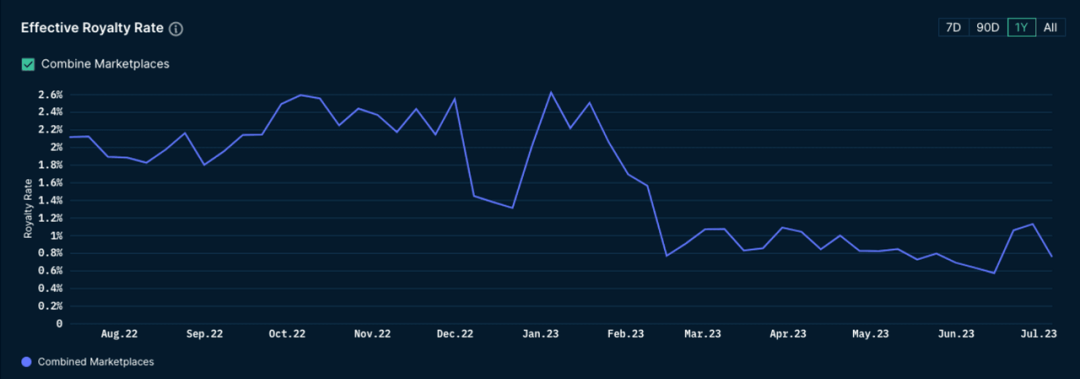
In contrast, a trend supporting mandatory royalty collection on trading platforms has gradually emerged. By the end of 2023, Magic Eden and Yuga Labs jointly launched an Ethereum trading platform that enforces creator royalties, opening a protected distribution channel for influential brands.
The current market has formed a dual-track structure: in the open market, low commission rates, primary market sales, intellectual property (IP) collaborations, and retail linkages constitute the main profit sources for creators; while closed ecosystems enforce royalties through contractual agreements, accommodating high-end NFT issuances.
In the field where incentive mechanisms dominate capital flows, the market share of trading platforms remains in dynamic flux.
In the Solana ecosystem, Magic Eden and Tensor have formed a duopoly competition, with their market shares fluctuating based on reward programs and program design adjustments, typically ranging between 40% and 60% at different times.
This is not a structural change but a result of the effects of incentive cycles; market share charts may appear to show a pattern shift, but will ultimately revert to the mean.
For creators, the core insight is to negotiate distribution plans during the issuance planning stage, rather than defaulting to a single platform.
User Trends Reveal Short-Term Development Path
The scalability of sports, ticketing, and loyalty programs is due to their cyclical and repetitive benefits, with core on-chain functions embedded in existing ticketing and e-commerce processes.
DappRadar's data for the third quarter of 2025 shows that the growth rate of sports-related NFT trading volume has surpassed the overall market, not yet accounting for full-season or league-level collaborative projects.
Growth in the gaming sector is even more robust. According to Messari data, Immutable's zkEVM architecture and real-time data show continued transaction growth, with its design of "ensuring security at the Ethereum layer and optimizing user experience at the L2 layer" highly compatible with asset custody and ongoing secondary trading fee demands.
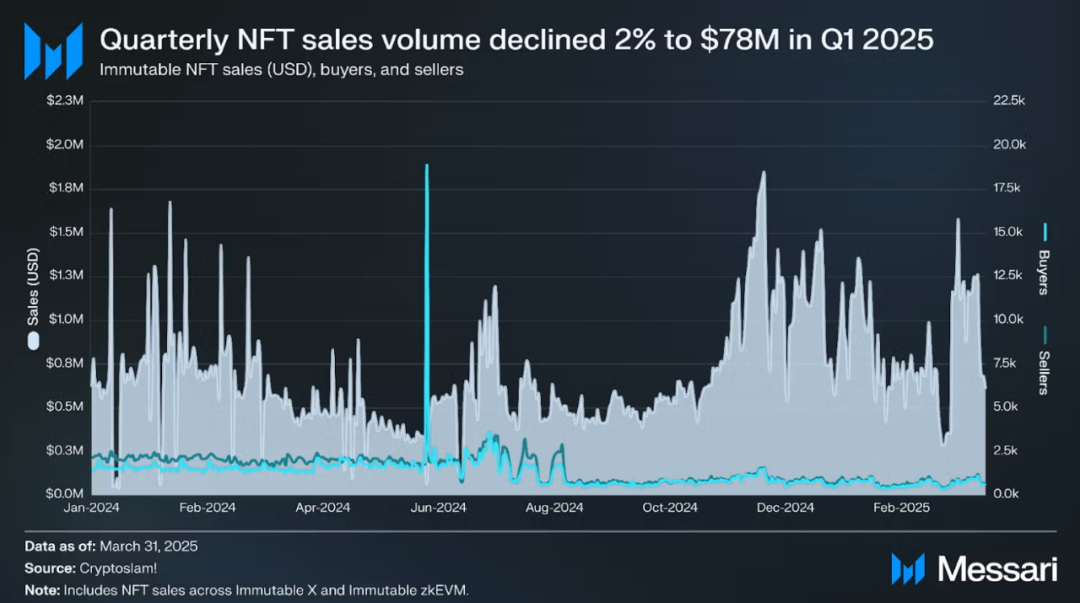
Intellectual property and licensing collaborations are another important bridge for NFTs to transition from digital collectibles (JPEGs) to consumer channels. Pudgy Penguins have entered over 3,000 Walmart stores, establishing a landing channel from NFTs to physical retail and licensing revenue.
For creators, the cost and user experience across various blockchains are now clearly distinguishable:
Ethereum's L1 layer still dominates traceability certification and high-value art markets, with gas fee fluctuations being significant, and royalty collection being optional;
Post-Dencun upgrade, Ethereum's L2 layer (like Base) has transaction fees reduced to a few cents, supporting sponsored or gasless transactions, and Base and Farcaster ecosystems provide social distribution channels;
Solana's compression technology keeps the issuance cost of millions of NFTs at the dollar level, achieving widespread reach through a mobile-first wallet ecosystem;
Bitcoin inscriptions focus on the scarce collectibles sector, with rising fees being a market characteristic rather than a defect.
Evolution of the Macroeconomic Landscape
The annualized trading volume of the NFT market in 2025 is expected to be between $5 billion and $6.5 billion, with average prices in the first half of the year maintaining between $80 and $100, establishing a baseline for next year's market scenario.
Using CryptoSlam's monthly sales as core data, combined with DappRadar's category breakdown analysis:
Bear Market Scenario: If the overall crypto market stagnates and average prices decline, total NFT trading volume could drop to $4 billion to $5 billion, with fee-sensitive application scenarios concentrating on Solana and Ethereum's L2 layer, while Ethereum's L1 art market remains stable, and the inscription market fluctuates with Bitcoin fee cycles.
Baseline Scenario: If embedded wallets and social minting channels continue to expand, sports and live event projects scale across seasons, and brands attempt to release new products on mandatory royalty platforms, total NFT trading volume could reach $6 billion to $9 billion.
Bull Market Scenario: If mobile distribution achieves breakthrough growth (Base and key login popularizing minting processes, Phantom's monthly active users surpassing 20 million, ticketing pilot projects becoming mainstream solutions, and gaming assets forming sustained trading), total NFT trading volume could reach $10 billion to $14 billion.
In all three scenarios, Ethereum's L2 layer and Solana will dominate market share, with Ethereum's L1 layer focusing on niche areas, while Bitcoin inscriptions stabilize as a scarce collectibles track.
Six Key Variables Determine Growth Pace
Wallet user experience and distribution capability: Core observation metrics include key adoption rates, sponsorship fee usage, and monthly active users of Phantom and Coinbase smart wallets.
Coverage of mandatory royalty collection: Influencing high-end NFT issuance, including OpenSea's policy shift and the health of trading platforms supporting creators within the Ethereum ecosystem.
Scaling of sports and ticketing collaborations: Expanding from pilot projects to full-season collaborations, converting one-time transaction volumes into recurring revenue.
Issuance rhythm of Base and Zora: Assessing the sustainability of social distribution channels through monthly minting volumes, Base's share of total NFT trading volume, and the linkage effects of Farcaster Frames.
Adoption rate of Solana's compression technology: Judging whether loyalty programs and media applications transition from pilot to normalization through compressed NFT minting volumes and deployment costs per million assets.
Bitcoin fee cycles: Its correlation with inscriptions and runes will vary with memory pool congestion levels, continuously affecting collectible pricing.
However, two risks persist. Wash trading and spam can still distort GMV and sales figures, so monitoring average sales and natural search-filtered dashboards is a safer approach.
The incentive mechanisms of trading platforms may create the illusion of "pattern shifts" in market share charts (in reality, influenced by airdrop cycles), especially in Solana's duopoly structure.
Therefore, creators' issuance planning should consider this volatility from the outset.
Another operational constraint is revenue design: in the context where royalties are mostly optional in the open market, primary market sales, intellectual property licensing, and retail collaborations bear more revenue responsibilities.
Meanwhile, closed platforms with mandatory royalties can only provide high-end issuance channels for a few brands, making it difficult for most creators to leverage.
From "Endgame" to "Migration" in Industry Transformation
The JPEG speculation frenzy has ended, NFT infrastructure costs have significantly decreased, and application scenarios have shifted towards ticketing, sports, gaming, and intellectual property, with wallets and distribution systems beginning to penetrate existing user scenarios.
The flagship blue-chip NFT project "Bored Ape Yacht Club" remains precarious for investors who once invested six figures to purchase AWS-hosted JPEGs.
An NFT from this series that sold for over 74 ETH in 2021 is now valued at only 9 ETH, representing an 87% drop over three years.
The speculative frenzy in the non-fungible token space may have concluded, but whether this will allow the underlying technology to gain recognition in practical real-world scenarios remains to be seen.
The answer awaits the test of time, but existing signs are promising, though this hope is unrelated to those trapped at high positions.
The NFT market closed the third quarter of 2025 with a trading volume of $1.58 billion and 18.1 million sales, while the market structure has continued to evolve towards practicality.
免责声明:本文章仅代表作者个人观点,不代表本平台的立场和观点。本文章仅供信息分享,不构成对任何人的任何投资建议。用户与作者之间的任何争议,与本平台无关。如网页中刊载的文章或图片涉及侵权,请提供相关的权利证明和身份证明发送邮件到support@aicoin.com,本平台相关工作人员将会进行核查。
